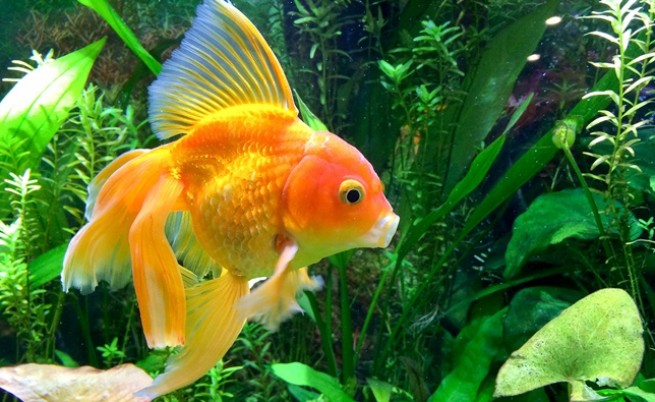Goldfish raised in a home aquarium usually grow to about 5 cm
A city in the US state of Minnesota has warned people not to release their unwanted domestic fish into the wild after finding giant goldfish in a nearby lake.
The small shiny fish in aquariums become many times larger when released. Thus, they cause serious disturbances in local ecosystems.
Burnsville City Council shared photos showing several monstrous goldfish caught in Lake Keller.
Goldfish are omnivorous. They feed on other fish, plankton, insect larvae and plants.
In Minnesota, goldfish are a regulated invasive species, which means that it is illegal to release them into public waters.
Goldfish raised in a home aquarium usually grow to about 5 cm.
But in the wild it becomes much larger, reproduces rapidly, prevails over native species and is extremely difficult to eliminate.
These little golden creatures look like a fairy tale when you see them swimming in your aquarium, but if you release them in nature, they are capable of destroying entire ecosystems.
It all started in the Australian river Vas nearly 20 years ago
A handful of specimens released into a smaller tributary of the river find their way downstream. They soon disperse, covering the entire river, and engulf its ecosystem.
Last year, the province of Alberta, Canada, ran a campaign entitled “Don’t Release Them.” The campaign aimed to get citizens to stop releasing the fish that struck Australia.
Similar reports of endangered ecosystems have been obtained in Bangor, Maine, and Lake Tahoe, Nevada in the United States.
In nature, goldfish mutate and multiply rapidly
When the owners of decorative creatures make the humane decision to “release” them, they most often release them into nearby lakes or rivers. The problem, however, is that the animals not only adapt to the new environment, but take it over.
Decades before the invasion of goldfish in the Vas River and before the species became generally dangerous, the Chinese domesticated it and adapted it to the home environment of an ancient species of carp. In the 19th century, the species made its way to the United States, where it is a common pet.
Due to their abundance, low cost and use for decoration, it is common practice for goldfish owners to release them as soon as they get tired of caring for them.
However, people do not realize that this is completely wrong and very dangerous. If a domestic species finds itself in a new environment, whether it is a small sweet goldfish, it can cause serious damage to nature in its attempt to adapt.
In the aquarium the size is limited, but in nature it is not. In the new environment, the domestic goldfish changes its size and can reach up to 40 cm in length. As they grow large enough, they change color from golden orange to yellow or brown.
Of course, fish do not mutate overnight. The changes take place over time due to the diversity in the aquatic environment – algae, a variety of foods and eggs of other species.
In the natural environment, fish reproduce at an exceptional rate
In the wild, females can produce up to 40,000 eggs a day, and if there are no natural predators, there are not many things that can hinder the species.
The more goldfish swim on the water floor, the faster the vegetation is destroyed, which can lead to serious pollution of water bodies and the appearance of harmful plants or parasites in the water.
Scientists note that domestic fish released into the wild are extremely fast swimmers that migrate in a flash to breed. Once researchers can find the breeding grounds for small eco-terrorists, they hope to be able to take them out of the wild.
For now, however, scientists are asking people to find out what harm their beautiful pets do when they find themselves in the wild, and to explore better options to get rid of them instead of “releasing” them.












